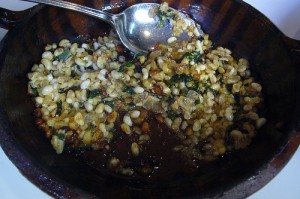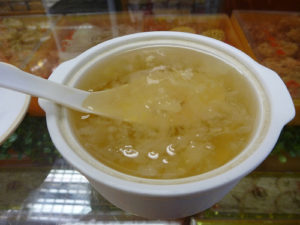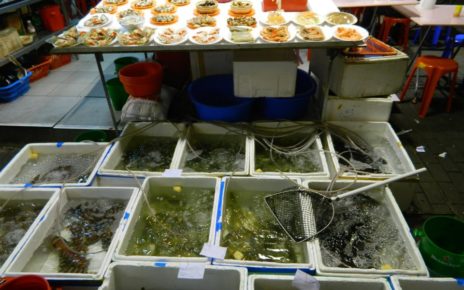The following is a guest post that I accepted because it’s so bizarrely interesting. I hope you have a strong stomach…
If you’re a traveling gastronomer, you’ll be no stranger to sampling exotic delicacies, but what are the world’s top specialty dishes? Join us as we explore the world’s most extraordinary eats in our list of luxury foods to try before you die. Be warned, it’s not for the faint-hearted!

Surströmming, Sweden
You’d have to be a fearless foodie to partake in this flavorsome fermented fish, popular in Northern Sweden. The putrid-smelling Baltic herring is said to be the worst smelling food in the world, with an overwhelming odour that necessitates al fresco dining. The canned cuisine is best sampled in a sandwich made with buttered Swedish bread (tunnbröd) and boiled potato slices, washed down with a generous serving of snaps or cold milk. Find cheap flights and head on over to Sweden to try this exotic food yourself
Century Egg, China
Known locally as pídàn, these eggs are preserved in a blend of ashes, clay, lime, salt and rice hulls for up to several months, after which the yolk becomes a deep grey-green and the albumen a limpid dark-brown. You’ll find them wrapped in pickled ginger as an appealing appetizer, mixed into omelets, and served over tofu, or even as part of a pork congee (rice porridge), popular in dim sum restaurants.
Fugu, Japan
Strictly for braver diners, this deadly delicacy contains a poison 1,250 times stronger than cyanide within its organs and skin. Expert chefs must undertake a three-year training process and rigorous tests in order to be able to serve the dangerous fish dish, which is ideally served as sashimi, but can also be fried, baked, stewed or served in a salad. Courses can easily set you back between £40-£160, and beware: if improperly prepared, the toxic treat can lead to paralysis and asphyxiation, with no known antidote!
Thorramatur, Iceland
Visit Reykjavik during the Nordic month of Thorri (January-February) and you’ll be treated to a smorgasbord of traditional dishes, including putrefied shark, boiled sheep’s head, rams’ testicles, seal flippers and blood-suet, all served buffet-style on wooden platters. Mostly cured in fermented whey, the classic cuisine has a distinctive sour taste, best washed down with plenty of Brennivin — the local schnapps.

Escamoles, Mexico
With a buttery taste and an appearance likened to fat grains of rice, this Mexican specialty seems pretty innocuous, but is, in fact, made of giant ant larvae. The palatable maggots are harvested from plant roots in a perilous process that involves avoiding the highly venomous insects. The wiggly nibbles are then sautéed with butter or deep fried and served in a taco with guacamole.
Casu Marzu, Sardinia
If you’re a fan of luxury larvae, you’ll love this sheep’s milk cheese, fermented with live cheese-fly maggots! Left outside with part of the rind removed, the flies are invited to embed their eggs within the Pecorino, the texture of which becomes soft and squirming with the white worms. Once banned, this fetid fromage is now exempt from the usual EU regulations due to its ‘traditional food’ status, and is best served on flatbread accompanied by a strong red wine.
Sannakji, Korea
You won’t get fresher than this dish of live baby octopus, served whole or cut into legs and tentacles that are still writhing on your plate. The trick here is to chew scrupulously to avoid suction cups sticking on the way down and causing a choking hazard. This is a true foodie adventure, where part of the dish’s pleasure derives from the wriggling sensation that accompanies the experience, and a glass of soju (rice wine) will help wash away any stray appendages.
Rocky Mountain Oysters, North America
Despite the aquatic moniker, these are actually calves’ testicles, peeled, deep-fried and served with a selection of dipping sauces. Also known as ‘dusted nuts’ or ‘cowboy caviar,’ these battered balls are favorites at festivals or steakhouses. You’ll also find a similar dish in Spain, known as criadillas or huevos de toro (bull’s eggs).

Bird’s Nest Soup, China
One of the most expensive animal products known to man, this glutinous broth can cost between £20-£60 a bowl. If you’re expecting a bundle of twigs, fear not — the nests are formed from the saliva of the cave swift, which dissolves in the chicken stock to form a rubbery texture. An acquired taste, this pricey potage is thought to have aphrodisiac qualities, among various other health benefits.
Kokoretsi, Greece
Vegetarians beware, this dish is strictly for carnivores only! This meaty meal is made from lamb or goat offal (heart, lungs, kidneys and sweetbreads) threaded on a skewer, wrapped in intestines and roasted over charcoal. Typically prepared at Easter, when families roast an entire lamb, the thickly-sliced meat-feast acts as an appetizer before the main meal is ready.
This guest post was written by Show and Stay, UK theatre break specialists.
Photos by Johan Anderson and Robert Staudhammer



